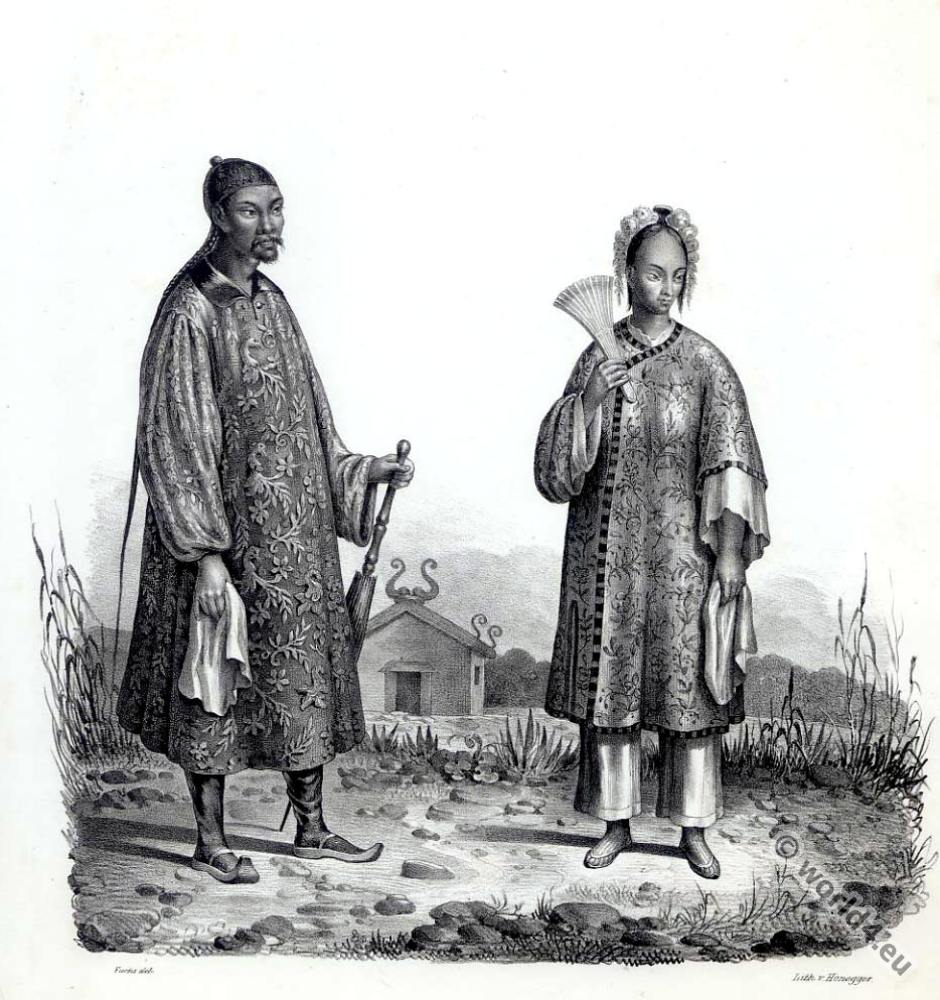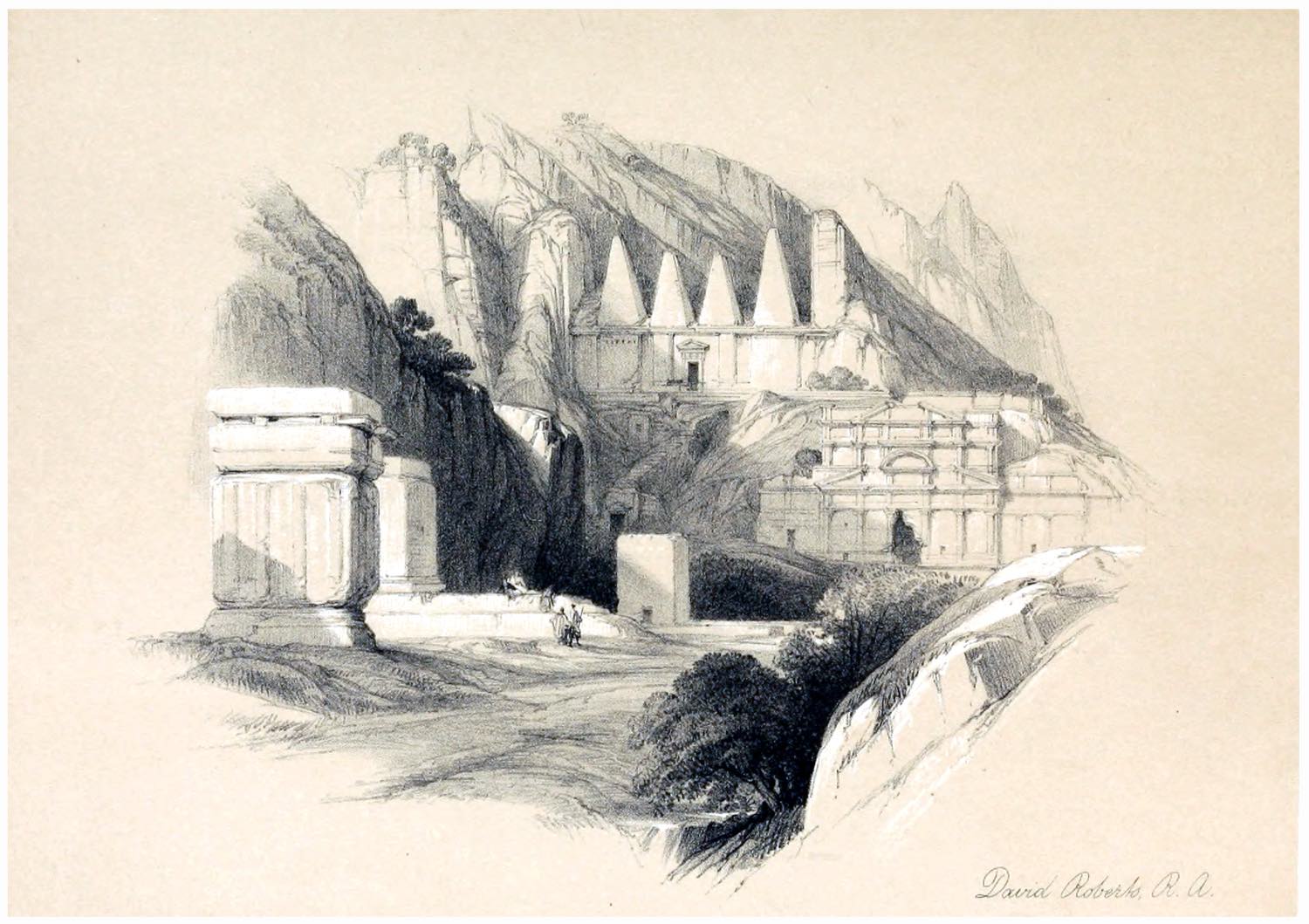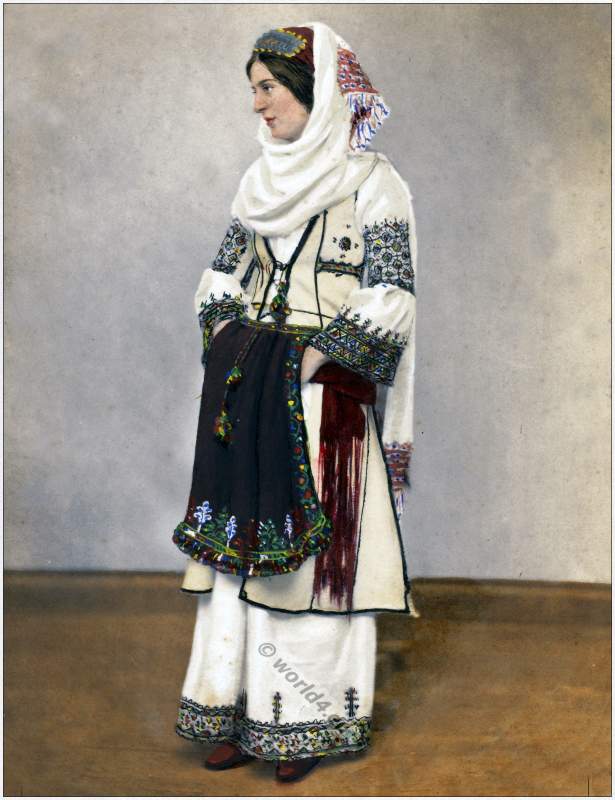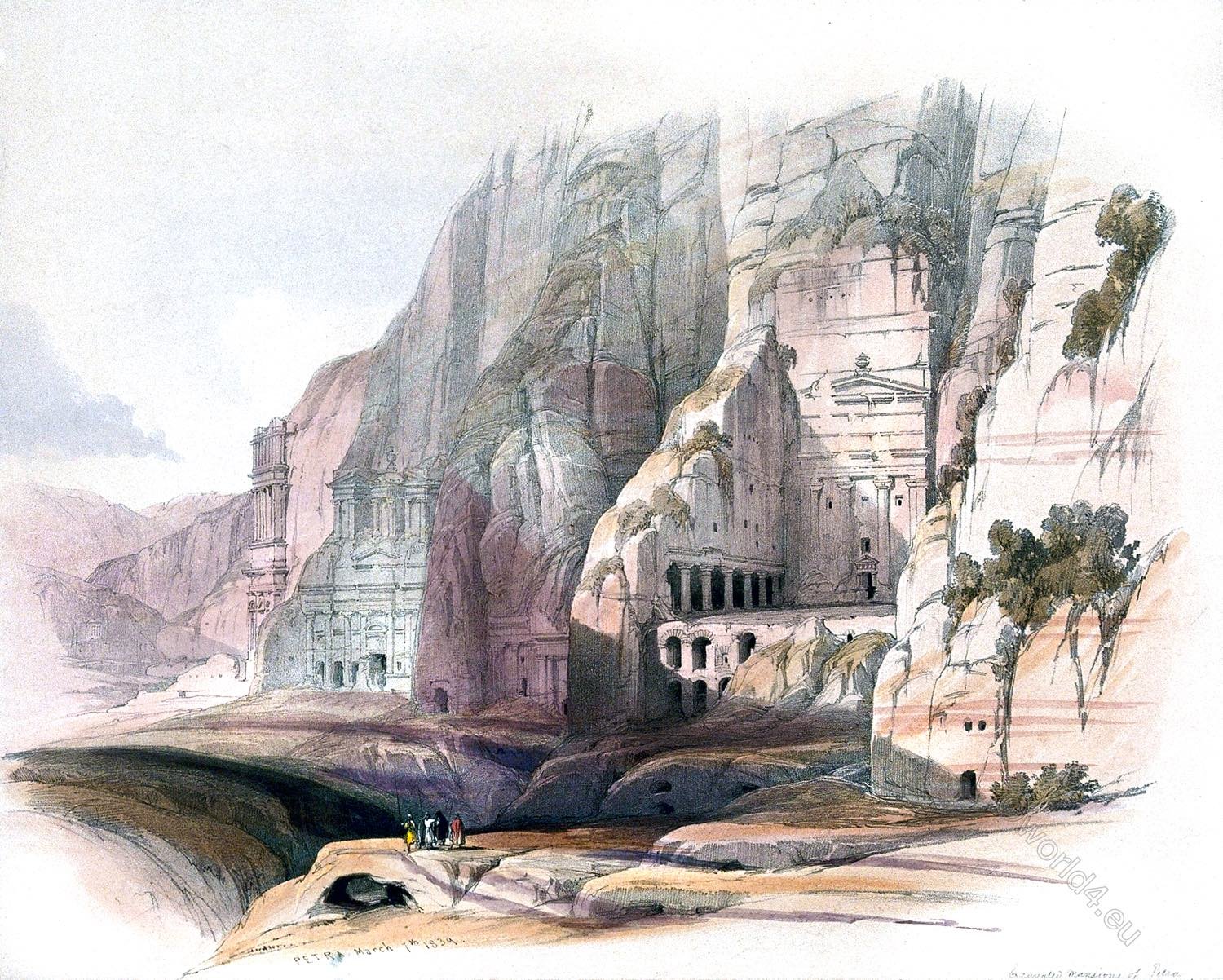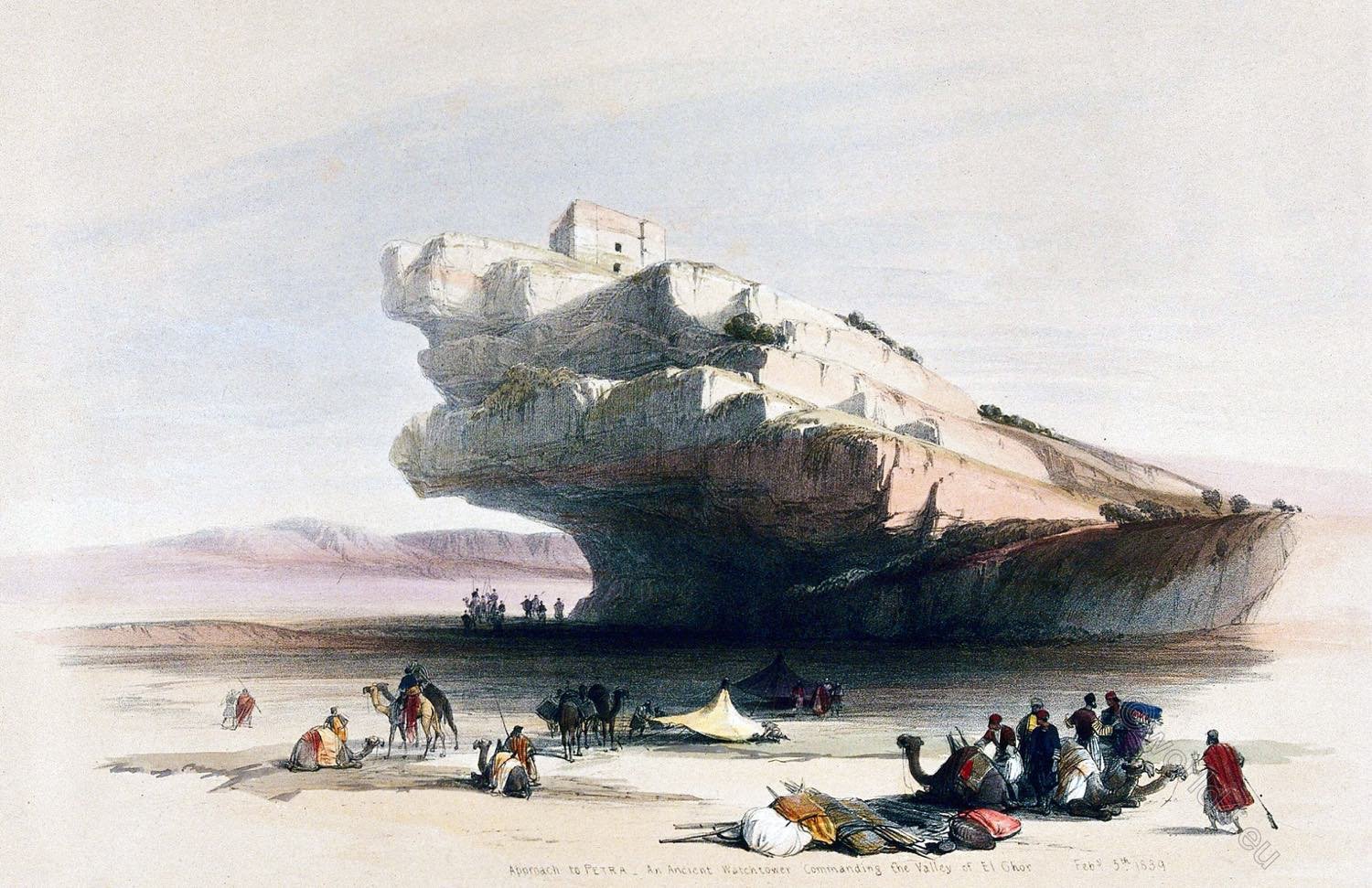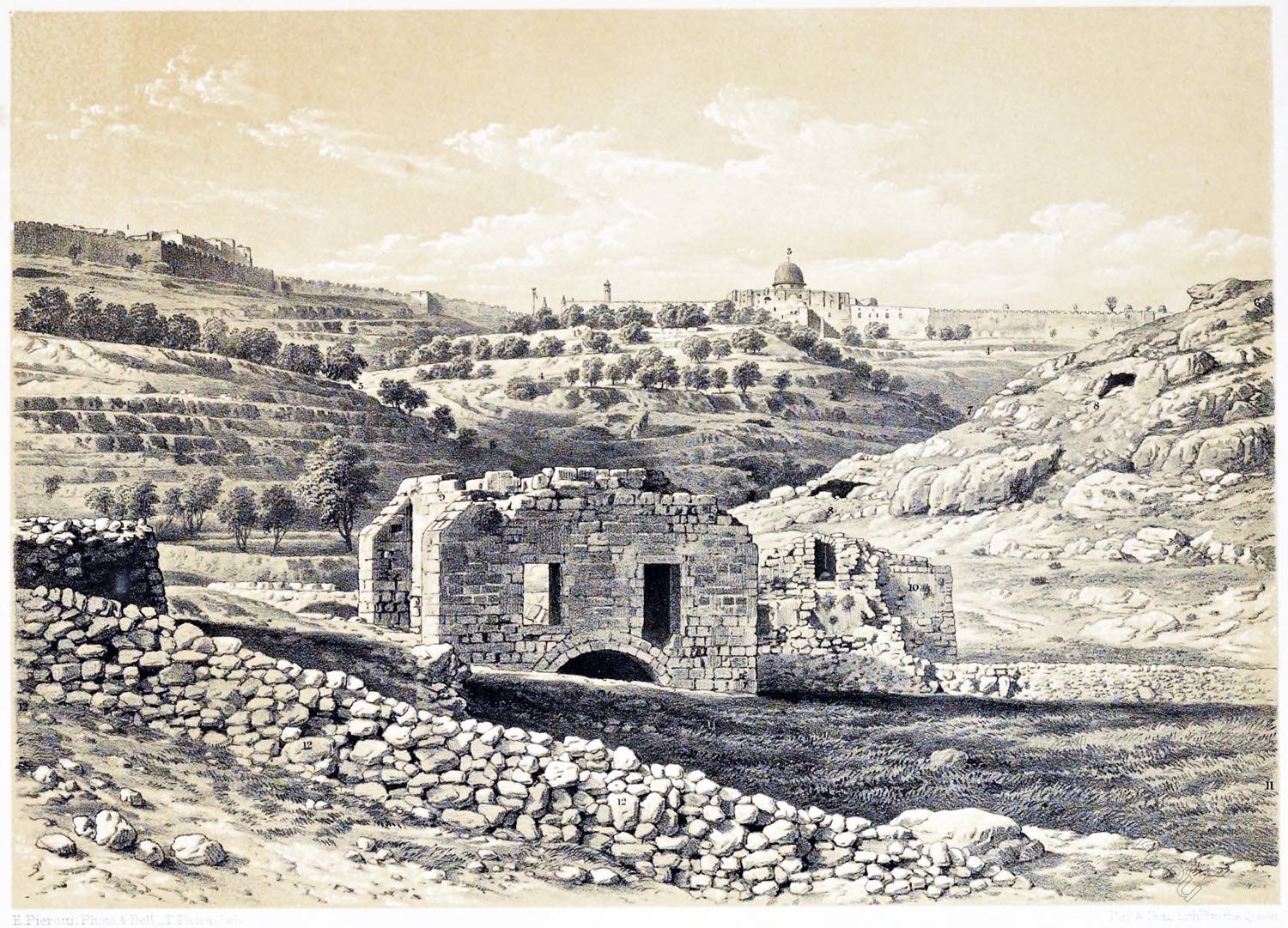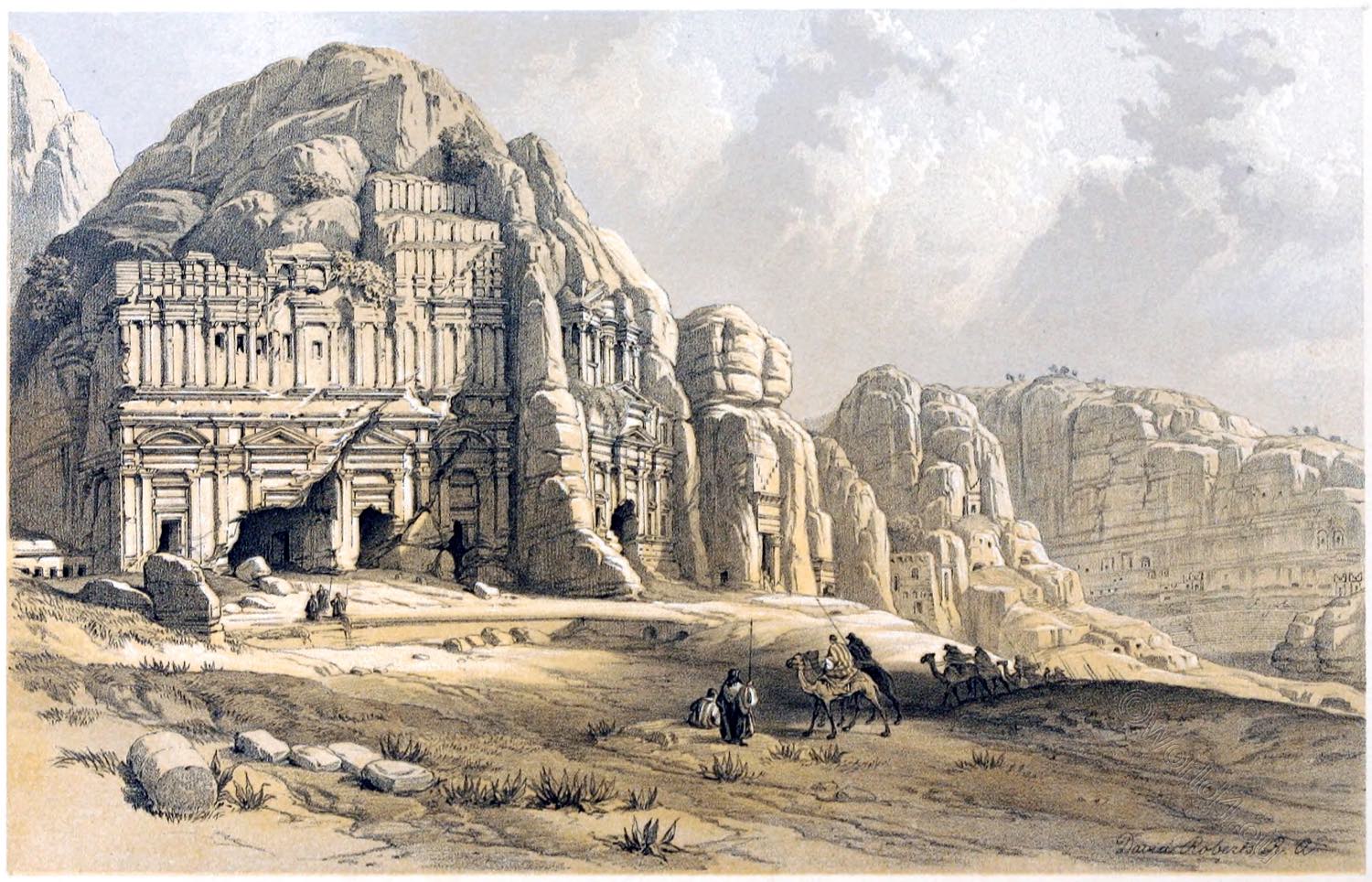
THE EASTERN END OF THE VALLEY
by David Roberts.
In advancing towards the termination of the valley, two masses of sculpture peculiarly attract the eye. One, the more distant in the present view, resembling the Khasne, but having eight Corinthian pillars.
The edifice in front is of larger dimensions, and has four entrances, adorned by pilasters and ornaments in the florid style. A part of the work has fallen down, probably in some earthquake, but it still has four stories, with a row of fourteen pilasters extending across each of the three upper ones. Only three pilasters of the highest tier, however, remain.
The excavations within form four apartments; but they are totally destitute of decoration, and they all contain simple recesses, of whose purpose nothing distinct is known. Travellers have, in general, pronounced them “either temples or tombs.” But while this indecision lasts, there still is room for conjecture; and the writer of these pages conceives, that their primary purpose was neither.
That places of public worship should be formed in the face of cliffs, some a thousand feet above the City, and almost inaccessible to the frequent approach of the people; without the space in front, or the depth within, which were essential to all ancient worship, whether Eastern or Western, seems improbable; and that these places of worship should be multiplied almost in every direction seems equally improbable.
We are to remember also, that the actual City was below, in a valley of two miles every way, where we still discover vestiges of the public buildings. It is in this extensive area that we are naturally to look for the site of edifices so important, and in such constant public use, as the temples of heathenism.
The opinion now offered is, that the majority of those sculptured excavations were for the sole purpose of gratifying the eye; a noble indulgence of the national taste for ornament, a natural and fine employment of the superfluous wealth of an active and opulent people compressed within a boundary, narrow but singularly adapted for the most novel and magnificent decoration.
In other sites, the wealth of cities flows into the surrounding landscape. But Petra saw round it only a circle of cliffs, from three hundred to a thousand feet high ; those cliffs rugged, and forming the strongest contrast to the profuse elegance of an Oriental City, reared by the richest traffic in the world.
The Citizens, unable to pass beyond their barrier, converted it into beauty; exchanged the wildness of its rocks for resemblances of the most graceful and stately architecture; and thus surrounded themselves with that picturesque, singular, and richly-embellished scenery, which, to this hour, excites the admiration of mankind.
Nor is it necessary to the conception, that this embellishment should have begun in any public design of the community. An unemployed architect, finding an easily wrought material, open to all, might have naturally adopted it to display his ability, in a position conspicuous to every eye.
An opulent and childless citizen might have thus exhibited his taste, or transmitted his memory. The example set by individual caprice might have been followed by public munificence. The habits of ancient times were highly favourable to the conjecture.
The want of those innumerable channels by which superfluous wealth finds its productive discharge in our day; the local pride of small commonwealths; the love of public decoration congenial to climates where nothing decays, and where the population live in the open air; and the actual existence of the finest monuments of the ancient world in their unmutilated beauty, naturally stimulated the popular spirit to respond to a call so deep as that uttered by the stupendous grandeur of the rocks of Petra.
That some of those excavations may, in after ages, have been used as temples or tombs is perfectly possible. That they may have been used as dwellings is probable, for such is the course of a declining state; pauperism readily takes refuge in a shelter which costs it nothing.
But that the original and general purpose was the gratification of public taste—the expenditure of national means on the most striking and splendid national ornament, and the conversion of a rude and savage circumvolution into a circle of the most superb imagery of Europe and Asia; if but a conjecture, is one not unsuitable to the incomparable effect before the eye, to the striking locality, or the operation of a people of genius and power.
Source: The Holy Land, Syria, Idumea, Arabia, Egypt, & Nubia, by David Roberts (British, 1796-1864), George Croly, William Brockedon. London: Lithographed, printed and published by Day & Son, lithographers to the Queen. Cate Street, Lincoln’s Inn Fields, 1855.
Discover more from World4 Costume Culture History
Subscribe to get the latest posts sent to your email.

